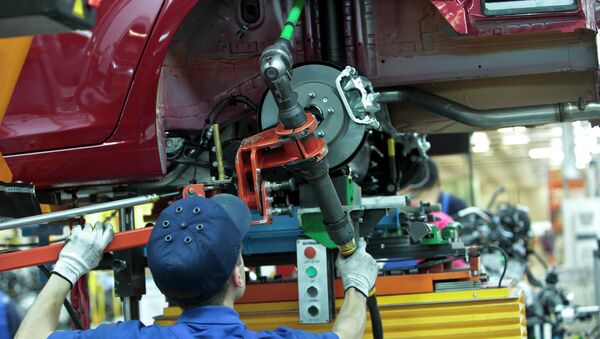General Motors announced on Wednesday that it would shut its Russian assembly plant and withdraw the Opel brand from the market by December 2015.
The automaker explained the move by the need to restructure its business to cope with a prolonged decline in car sales.
However, the move does not include luxury and high-end models, which have not been affected by the Russian car market’s decline. GM said it would keep selling Cadillacs as well as higher-end Chevrolets such as the Corvette, Camaro and Tahoe.
For Cadillac, Russia is its fourth largest market in the world.
The US automaker’s announcement will not affect its joint venture with AvtoVAZ either, the Russian company’s press service said on Wednesday.
SsangYong, for its part, said its decision to cancel exports to Russia was only temporary and that the company would, along with Japan’s Mazda, keep their Sollers assembly facility in Vladivostok going.
Toyota, Renault, Hyundai, Nissan, Mitsubishi and BMW said they would not roll up their Russian production either.
Not to be outdone, Volkswagen said it planned to build an engine factory in Kaluga. Ford Sollers is ready to expand its presence in the Russian regions by filling in the void left by the outgoing brands, obviously the General Motors.
Undaunted by the falling sales, Ford Sollers reiterated its intention to launch four new models and reach an average localization figure of 60 percent by 2018.
MMC-Рус (Mitsubishi) President Takai Naoya said that only car brands with a high degree of localization would be able to keep prices down and dominate the market.
“It is very difficult for us to forecast the market situation. All we can say is that Mitsubishi will maintain our market share this year. The key word for 2015 is challenge. In a serious market situation it’s time both for our dealers and distributors to challenge the market, challenge the competitors and… win. We are going to launch two new cars — Mitsubishi Outlander and Mitsubishi L200. In the next three years we are going to launch Outlander, ASX and Pagero,” Naoya told Sputnik.
Takai Naoya added that all these models would be assembled at the Mitsubishi plant in the Kaluga region. Their localization level is now 30 percent but the company is determined to raise the figure in the next few years.
Crisis or no crisis, the Russian market remains attractive for the giant automakers and the rising competition between them will only play into the hands of the potential buyer…



